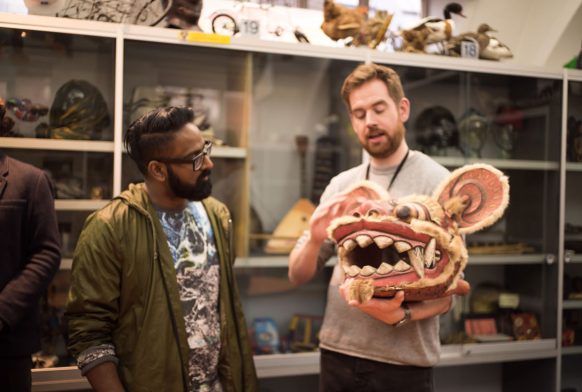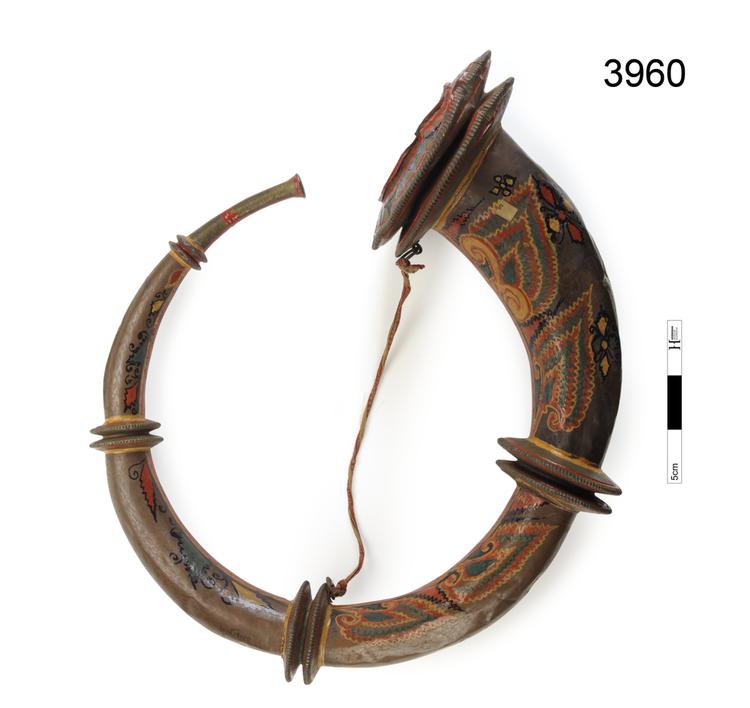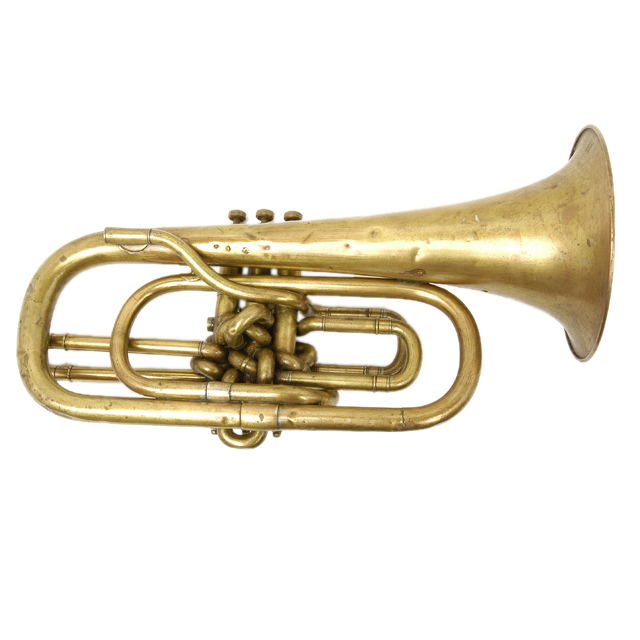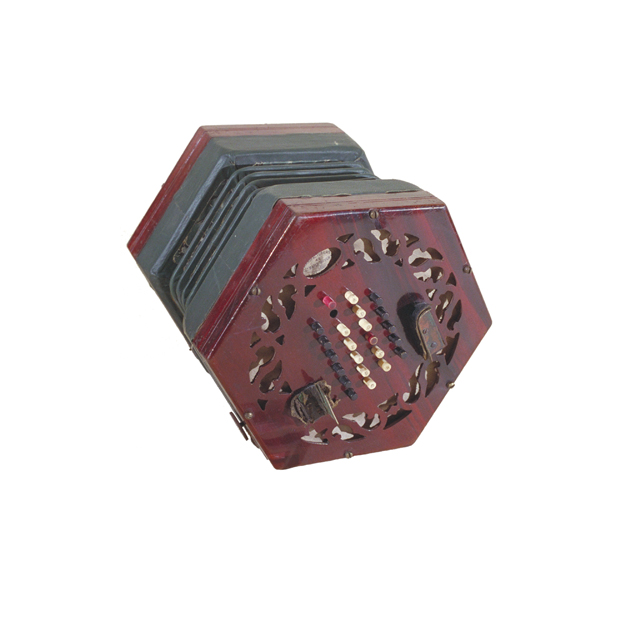
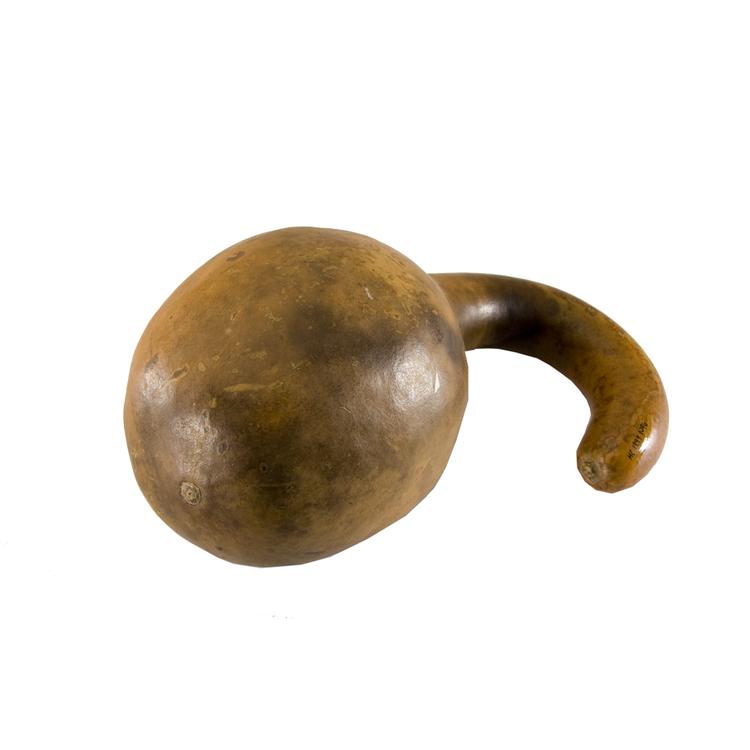
Gourd rattle with loose material inside and corn cob stopper.
Manufacture continued:
Gourds are hard skinned fruits from the same plant family as melons, pumpkins, squashes and cucumbers. Gourds grow best in a dry climate as they mould and rot easily. When the gourd is fully dry it will be very light in weight, the seeds will rattle inside and the outer shell will be very hard. Only then is it ready to be prepared for use. The soft outer skin is scrubbed off and the hard outer skin can be carved, incised, burnt, painted or dyed for decoration, or even just polished to show its natural colours.
Since hollow gourds are natural resonators they are often made into musical instruments.
Unopened dry gourds are natural rattles as the seeds move around inside but by cutting a few small holes or slits in the gourd, more of the sounds will he heard. By adding more stones or seeds the sound will change. Often the outside of a gourd is covered with a net to which seeds, beads, shells etc have been added, to give additional sounds. Stretch some animal skin over the cut off end of a gourd and you have a drum. Gourds also serve as separate resonators or echo chambers in other instruments - the 'mbira' (thumb piano) of Africa and the wooden-keyed 'balafon' xylophone or 'marimba' of Africa and South America are often amplified with the addition of gourds.
Half gourds come in lots of different sizes and are mostly used as bowls for food and liquid. Larger sized gourds are often used by women to carry things around on their head. Gourds are very versatile and their range of shapes and sizes makes them suitable for many different purposes. A whole gourd is commonly used to carry water, store milk or home made beer. Whole elongated gourds can be cut in half and used as spoons. They also have many uses outside of the home. They make very good fishing floats and very large half gourds have even been used as boats! There is an annual festival in Nigeria where people take to the river in gourd boats.



